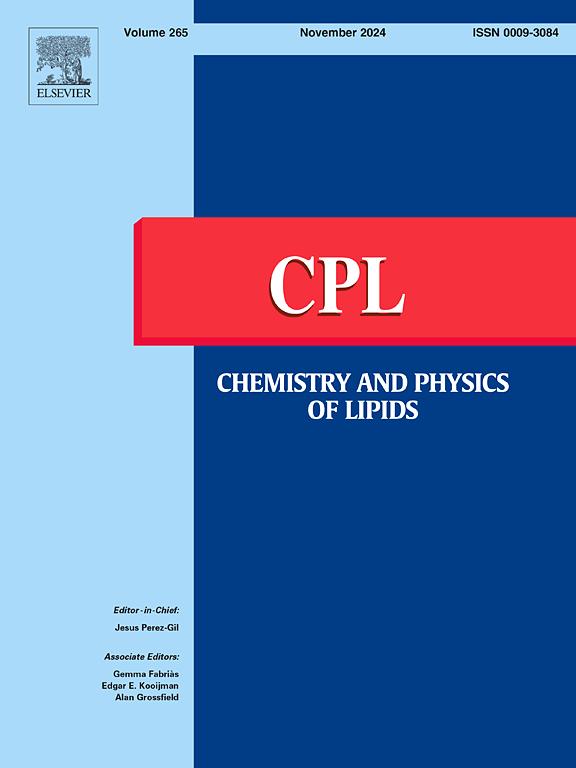乳酸菌和胆汁酸之间的相互作用:分子和生物物理的见解。
IF 2.8
3区 生物学
Q2 BIOCHEMISTRY & MOLECULAR BIOLOGY
引用次数: 0
摘要
微生物与宿主之间的动态相互作用对刺激免疫系统、维持肠道稳态和防止病原体定植至关重要。近几十年来,乳酸菌因其益生菌潜力及其对肠道菌群和宿主健康的影响而受到人们的关注。本文旨在综述胆汁酸(BA)改变肠道菌群组成和细菌活力的主要分子机制,重点介绍其对乳酸菌的影响。本文讨论的结果表明,BA破坏了细菌细胞壁的结构,改变了它们的表面性质和粘附能力,损害了细胞膜的完整性,损失了必需离子和营养物质。然后它们进入细胞内部,其速率取决于它们的水合性。在那里,它们解离,引起细胞内酸化和膜电位的耗散。这导致关键过程所需的生物能缺乏,导致高浓度的细胞死亡。此外,BA引起蛋白质和核酸的改变和氧化。胆汁酸(BA)造成的损害程度受其结构、理化性质(特别是疏水性)和浓度的影响。乳酸菌(LAB)的应答取决于其内在的和适应性的耐药机制。推进对这些相互作用的研究代表了一个新的前沿,使调节肠道微生物群组成的策略得以发展,最终有益于人类健康。本文章由计算机程序翻译,如有差异,请以英文原文为准。
Interaction between lactic acid bacteria and bile acids: Molecular and biophysical insights
Dynamic interactions between microbes and host are essential to stimulate the immune system, maintain intestinal homeostasis, and prevent pathogen colonization. In recent decades lactic acid bacteria (LAB) have received attention due to their probiotic potential and their impact on gut microbiota and host health. This paper aims to review the main molecular mechanisms by which bile acids (BA) modify the composition of the intestinal microbiota and bacterial viability, with special emphasis on the effect on LAB. The results discussed here suggest that the BA disorganize the structure of the bacterial cell wall, modify their surface properties, their adhesion capacity and compromise the integrity of the membranes, with loss of essential ions and nutrients. They then enter the cell interior, at rates that depend on their hydrobicity. There, they dissociate, causing intracellular acidification and dissipation of membrane potential. This leads to a deficiency in the biological energy needed for critical processes, leading to cell death at high concentrations. In addition, BA causes alteration and oxidation of proteins and nucleic acids. The extent of damage caused by BA is influenced by their structure, physicochemical properties—particularly hydrophobicity—and concentration. The response of LAB depends on both their intrinsic and adaptive mechanisms. Advancing research on these interactions represents a new frontier, enabling the development of strategies to modulate intestinal microbiota composition, ultimately benefiting human health.
求助全文
通过发布文献求助,成功后即可免费获取论文全文。
去求助
来源期刊

Chemistry and Physics of Lipids
生物-生化与分子生物学
CiteScore
7.60
自引率
2.90%
发文量
50
审稿时长
40 days
期刊介绍:
Chemistry and Physics of Lipids publishes research papers and review articles on chemical and physical aspects of lipids with primary emphasis on the relationship of these properties to biological functions and to biomedical applications.
Accordingly, the journal covers: advances in synthetic and analytical lipid methodology; mass-spectrometry of lipids; chemical and physical characterisation of isolated structures; thermodynamics, phase behaviour, topology and dynamics of lipid assemblies; physicochemical studies into lipid-lipid and lipid-protein interactions in lipoproteins and in natural and model membranes; movement of lipids within, across and between membranes; intracellular lipid transfer; structure-function relationships and the nature of lipid-derived second messengers; chemical, physical and functional alterations of lipids induced by free radicals; enzymatic and non-enzymatic mechanisms of lipid peroxidation in cells, tissues, biofluids; oxidative lipidomics; and the role of lipids in the regulation of membrane-dependent biological processes.
 求助内容:
求助内容: 应助结果提醒方式:
应助结果提醒方式:


